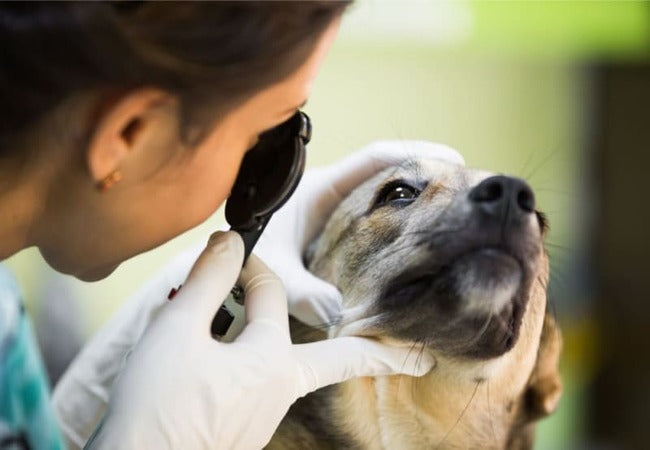🐾 Dog Cataract Surgery 2025: Expert Veterinary Guide by Dr Duncan Houston BVSc 🩺

In this article
🐾 Dog Cataract Surgery 2025: Expert Veterinary Guide by Dr Duncan Houston BVSc 🩺
Hello, I’m Dr Duncan Houston BVSc, veterinarian and founder of Ask A Vet. Cataracts—a clouded lens—can severely impair your dog’s vision and quality of life. In this authoritative guide, we dive into the world of canine phacoemulsification: diagnosis, preparation, surgery, recovery, finances, and long-term outlook—for 2025 and beyond. Let’s bring clarity and light back to your pup’s world 🐶👁️.
1. 👁️ What Are Cataracts?
A cataract occurs when proteins in the eye’s lens clump, causing cloudiness that blocks light from reaching the retina—leading to blurred vision or even blindness :contentReference[oaicite:2]{index=2}. You might notice a milky‑white or blue hue over the pupil :contentReference[oaicite:3]{index=3}.
2. 🎯 Causes & Risk Factors
- Genetic/hereditary: Common in breeds like Poodles, Cocker Spaniels, Bostons, Labs—juvenile cataracts possible :contentReference[oaicite:4]{index=4}.
- Diabetes mellitus: High lens glucose causes rapid cataract formation—urgent surgical consideration :contentReference[oaicite:5]{index=5}.
- Aging: Senile cataracts form gradually; differentiate from nuclear sclerosis which affects light sharpness :contentReference[oaicite:6]{index=6}.
- Trauma or secondary inflammation: Can induce lens damage and cataract :contentReference[oaicite:7]{index=7}.
3. 🏥 Why Surgery? Phacoemulsification Explained
Phacoemulsification—using ultrasound to break up and remove the cloudy lens—is the only proven treatment to restore vision in dogs :contentReference[oaicite:8]{index=8}. The procedure includes:
- A small corneal incision into the lens capsule
- Ultrasonic emulsification for lens fragmentation and aspiration :contentReference[oaicite:9]{index=9}
- Implantation of an intraocular lens (IOL) for clearer vision :contentReference[oaicite:10]{index=10}
- Suturing the incision and applying anti-inflammatory protocols
4. ✅ Candidacy & Pre‑Op Testing
- Ophthalmic exam: Tonometry, slit-lamp, pupil reflex
- ERG & ultrasound: Confirm retinal health and rule out detachment :contentReference[oaicite:11]{index=11}
- Bloodwork/diabetic control: We require stable glucose for diabetic dogs :contentReference[oaicite:12]{index=12}
- Inflammation control: Treat uveitis pre‑operatively to reduce risk :contentReference[oaicite:13]{index=13}
- Candidate selection: Surgery delays in dogs with systemic illness, unstable eyes, or behavioral challenges :contentReference[oaicite:14]{index=14}
5. 🧪 What to Expect During Surgery
- Anesthesia: General anesthesia plus local blocks; vital signs monitored throughout :contentReference[oaicite:15]{index=15}
- Procedure: Microscopic precision to reduce trauma and speed recovery :contentReference[oaicite:16]{index=16}
- IOL placement: Typically implanted unless contraindicated
- Duration: Usually under 60 minutes per eye :contentReference[oaicite:17]{index=17}
6. ⚠️ Risks & Complications
- Uveitis (intraocular inflammation): Most common—managed with intensive meds :contentReference[oaicite:18]{index=18}
- Glaucoma or postoperative hypertensive pressure: Watchful follow-up necessary :contentReference[oaicite:19]{index=19}
- Retinal detachment: Serious, though rarer; necessitates close post-op ERGs & ocular ultrasounds :contentReference[oaicite:20]{index=20}
- IOL issues: Fibre regrowth, displacement, or capsular opacity :contentReference[oaicite:21]{index=21}
- Corneal ulcers or incision failure
- Anesthesia risks: Elevated in older, diabetic, or cardiac animals
7. 📈 Success Rates & Long-Term Outcomes
- Initial vision restoration: 90–100% regain sight immediately after recovery :contentReference[oaicite:22]{index=22}
- Long-term vision retention: 80–90% maintain good vision at ≥1–2 years :contentReference[oaicite:23]{index=23}
- Surgery earlier in cataract development leads to fewer complications :contentReference[oaicite:24]{index=24}
- Diabetic dogs do similarly well if glucose is well-controlled :contentReference[oaicite:25]{index=25}
8. 💵 Costs & Financial Considerations
- Surgery: $2,700–4,900 per eye, depending on tests, IOLs, and region :contentReference[oaicite:26]{index=26}
- Diagnostics: ERG, ultrasound, bloodwork, tonometry—add $500–1,000+ :contentReference[oaicite:27]{index=27}
- Medications & rechecks: Eye drops—frequent at first tapering towards lifelong maintenance
- Funding: Pet insurance (e.g., Healthy Paws, Embrace) may cover up to 90%, unless pre-existing; CareCredit and vet payment plans are options :contentReference[oaicite:28]{index=28}
9. 🏡 Aftercare & Recovery Timeline
- Immediate post-op (same day): Eye shield, pain meds (NSAIDs), and restricted activity :contentReference[oaicite:29]{index=29}
- First two weeks: 4–6× daily eye drops (antibiotics + steroids); e-collar to prevent rubbing :contentReference[oaicite:30]{index=30}
- Follow-up schedule: Day 1, Week 1, Week 2, Month 1, then every 6–12 months :contentReference[oaicite:31]{index=31}
- Home care: Avoid grooming eyes, swimming for 2–3 weeks; watch for redness, discharge, sudden vision changes :contentReference[oaicite:32]{index=32}
- Long-term: Lifelong monitoring—pressure checks, inflammation control, IOL position
10. 🧩 Support Tools: Ask A Vet, Woopf & Purrz
- Ask A Vet: Telehealth guidance for pre-op prep, medication scheduling, incision checks, vision tracking
- Woopf: Supplies—e-collars, calming bedding, eye-cleaning kits, post-op nutrition options
- Purrz: Scheduler for surgery day, meds reminders, photo logging, automated follow-up alerts
11. ℹ️ Alternatives to Surgery
- Observation & medical management: For immature cataracts with minimal vision loss—use anti-inflammatory drops but vision won’t improve :contentReference[oaicite:33]{index=33}
- Enucleation: Last-resort: for blind, painful eyes unfit for surgery
12. 📝 Final Thoughts
In 2025, phacoemulsification offers high success (90%+) at restoring vision in dogs with cataracts, especially when done before complications arise. Although it’s a financial and emotional commitment—with surgical costs, intensive aftercare, and lifelong monitoring—the rewards are profound: clarity, mobility, and improved quality of life. Partner with a board-certified ophthalmologist, follow up diligently, and utilize Ask A Vet, Woopf & Purrz to support your pup’s journey back to light. If you see cloudiness, schedule an ophthalmic evaluation now—every moment counts. 🐾💙
Want printable eye-drop schedules, vision-tracking logs, or breed-specific risk checklists? Visit AskAVet.com, browse post-surgical eye-care kits on Woopf, and track your dog’s recovery with Purrz. Clear vision awaits! 🌟


